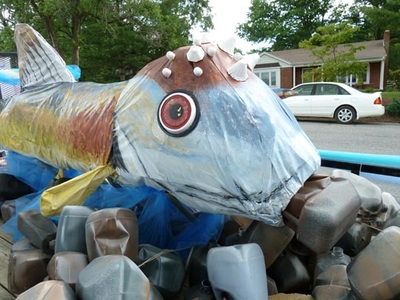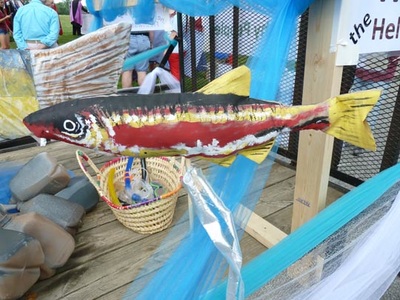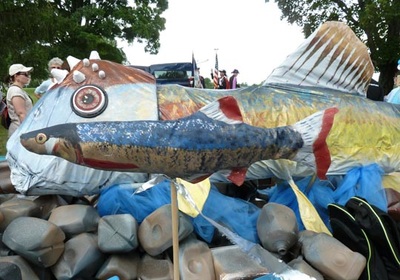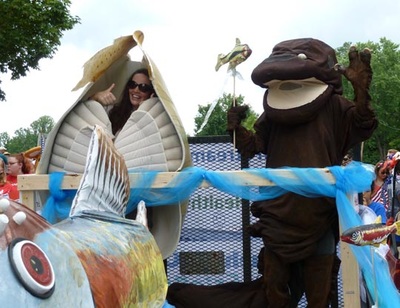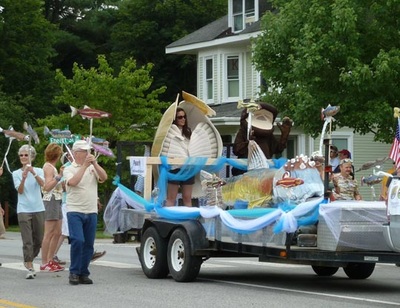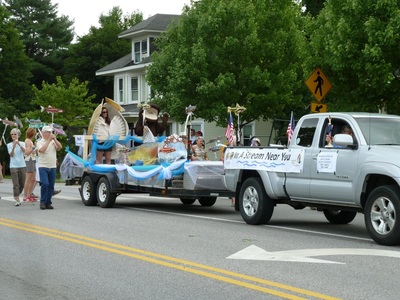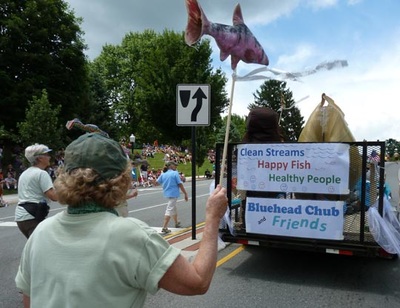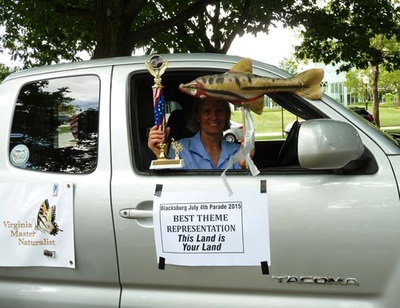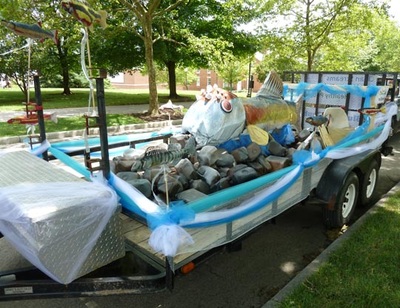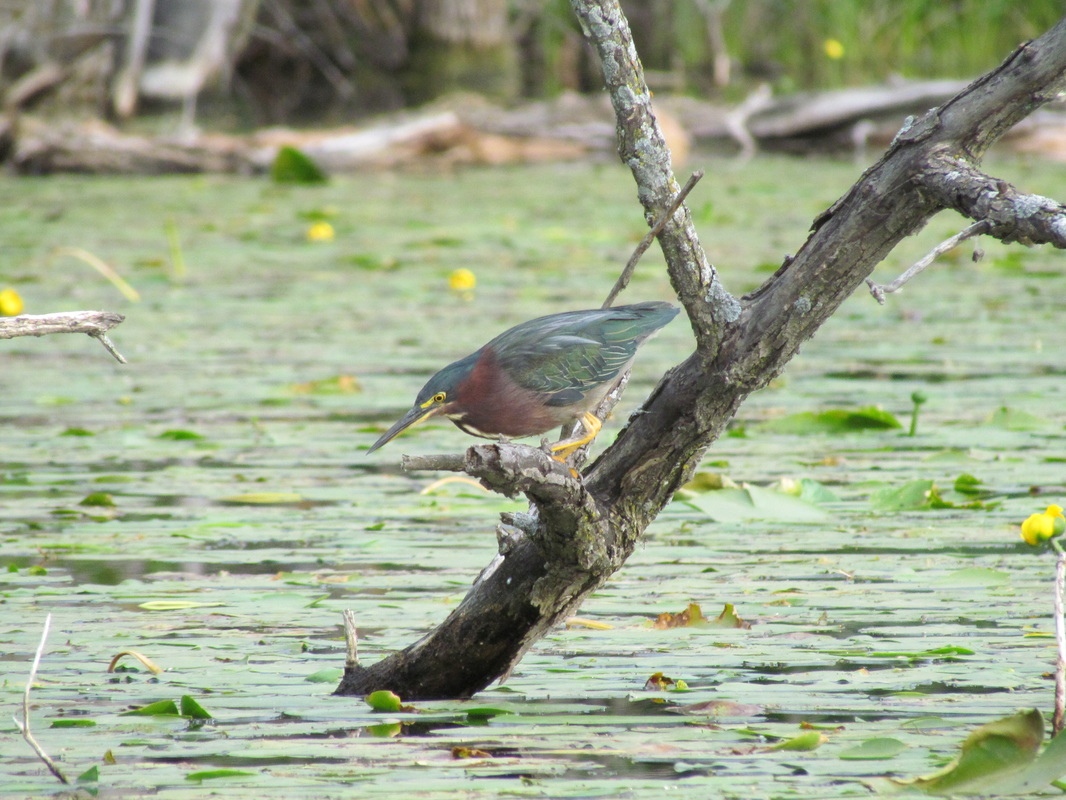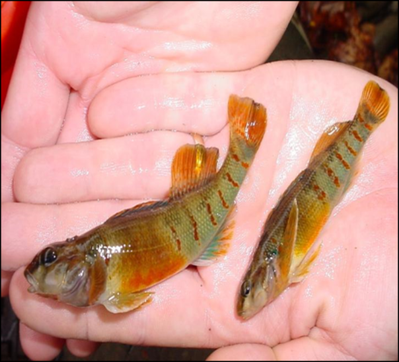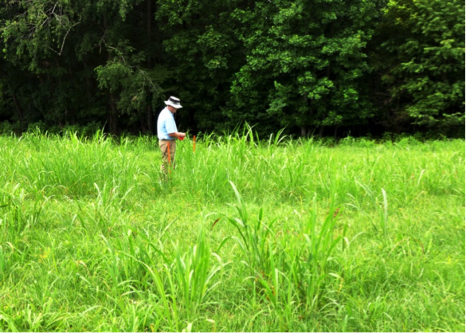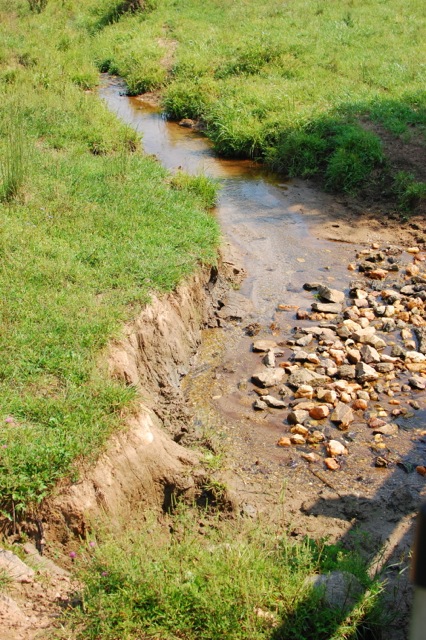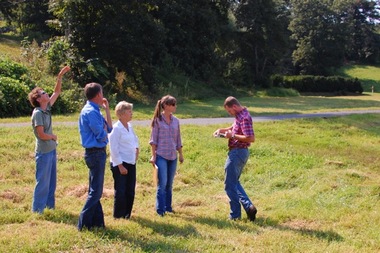Laurels, Summer 2015
VMN volunteer Claudia Lee (Historic Southside Chapter) planned a program to reduce litter by increasing recycling of fishing line. Her program recently was awarded a $200 grant from the Suffolk Clean Community Commission to put in the recycling bins.
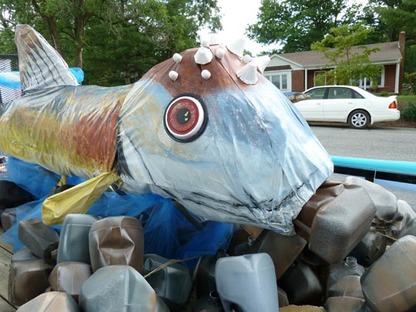 Chubby, the Bluehead Chub (Photo by Bill Sydor, VMN volunteer)
Chubby, the Bluehead Chub (Photo by Bill Sydor, VMN volunteer)
The New River Valley Master Naturalists carried out a creative plan to raise awareness in their community about biodiversity in freshwater streams. Over the course of six months, they designed and built a float for Blacksburg’s Fourth of July parade, titled “In a Stream Near You.” The premier feature of the float was a 10-foot Bluehead Chub, a mound-building freshwater fish native to Virginia. “Chubby” was joined by a variety of minnows, which also make use of the nest mounds that the chub builds. The float was featured in the Roanoke Times, won an award for the best representation of the parade’s theme (This Land is Your Land), and surely built community awareness of these aquatic resources! Take a look at their creative (and biologically accurate) float elements in the gallery below, with photos courtesy of New River Valley Master Naturalist volunteer Bill Sydor.
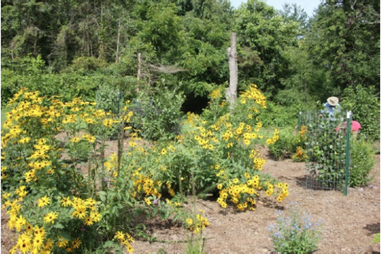 Pollinator-friendly plantings at the Town of Washington project. Photo by VMN Old Rag Chapter.
Pollinator-friendly plantings at the Town of Washington project. Photo by VMN Old Rag Chapter.
The Old Rag Chapter wrote with an update on their Town of Washington project, an inspiring restoration that has turned an empty lot filled with invasive and trash into a thriving habitat for pollinators, wetland species, and more. Three years ago, a butterfly count at the site revealed only three butterflies. This summer, VMN volunteer Jack Price reports, “”I thought it would be nice to let the group know that we must be doing something right at out Town of Washington nature trail project. Today, during our workday, I found a monarch caterpillar feeding on the Butterflyweed at the project. In a little over 3 years, the area has gone from being a trash dump full of invasive plants, to a habitat that hosts a variety of birds and butterflies, now including monarchs.”
Pat Temples (VMN volunteer, Old Rag Chapter) is once again a winner in multiple categories in the annual Virginia Wildlife Photography contest. Her award-winning photographs are featured in the July/August 2015 issue of Virginia Wildlife.
The Pocahontas Chapter has created a new memorial scholarship for their VMN basic training course. The Margaret “Margie” Dexter VMN Training Scholarship was established by the Pocahontas Chapter Board of Directors and its membership with plans to award it annually to an individual whose personal or professional experience and interests exemplifies a spirit of dedication to the mission and values of the Virginia Master Naturalist program. What a beautiful way to honor the memory of Margie (a long-time Pocahontas Master Naturalist) and her many contributions to the chapter!
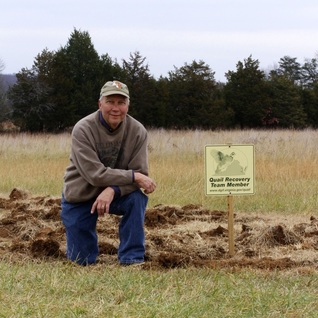 Virginia Master Naturalist and Master Gardener, Walter Hussey
Virginia Master Naturalist and Master Gardener, Walter Hussey
VMN volunteer Walter Hussey (Rivanna Chapter) was recognized as one of just 50 Hometown Heroes from across the Commonwealth. The Allen & Allen Hometown Heroes award recognizes Virginians who are responsible for generating positive change in the community or in the lives of others. Walter has been the major leader and organizer of the restoration of more than 50 acres of parkland in Fluvanna’s Pleasant Grove park. Not only has he led the creation of pollinator and quail habitats at the site, he has personally planted more than 850 trees. Wow!
Marie Majarov (VMN volunteer, Shenandoah Chapter) is a member of the Mason-Dixon Outdoor Writers Association, a professional writers group that encompasses the mid-Atlantic states. Every spring they hold an Excellence-in-Craft competition for works published during the previous year. One of their special awards, the Joe Penfold Memorial Award, is given to an outdoor organization for grassroots conservation efforts based on a member’s publication. Marie nominated the Virginia Master Naturalist program based on her article in Virginia Wildlife magazine…and the VMN won!
Joe Penfold, for whom the award is named, is a very important conservationist of the 20th century. He is not well-known but ranking in importance with names like Aldo Leopold and Rachel Carson. Take a moment to learn more about him!
On behalf of the Mason-Dixon Outdoor Writers Association, Marie presented VMN program leaders with a plaque in May at a volunteer training workshop near Front Royal, VA. We are so honored to receive this award and so appreciative of the efforts of both Marie and her VMN chapter.
Laurels, Summer 2015 Read Post »

